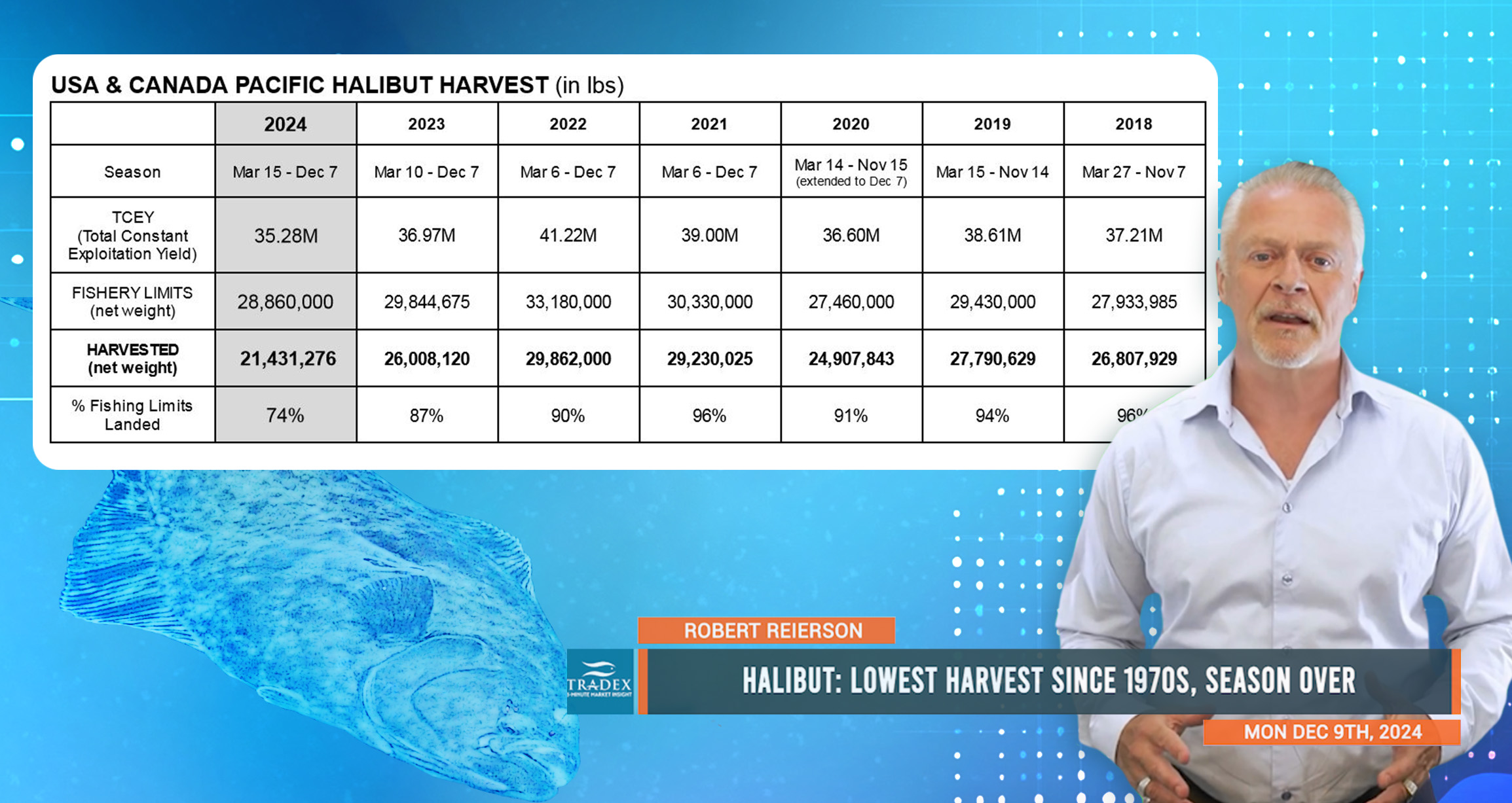
Loading
EP 720 | AIRED 12/09/2024
Pacific Halibut: Lowest Harvest Since 1970s, Declining Stocks & Sizes, No Fresh Supply Until Next Year
December 9th, 2024 - The Pacific Halibut fishery has now closed, and preliminary catch totals suggest that the 2024 harvest may rank among the lowest since the 1970s.
Latest harvest totals by the end of November showed net weight landings of about 21.4 million pounds potentially marking a shortfall of 4.5 million pounds from last year, and up to 6 million pounds less than the previous 5-year average.
Current landings represent about 74% of this year’s catch limit, and marks one of the lowest percentages in recent years as the fishery has typically achieved around 90% of its limits in recent years.
This year’s catch limit is also one of the lowest on record in recent decades, with spawning biomass nearing the lowest levels since the 1970s.
If sourcing frozen Pacific halibut fletches (and headed-and-gutted fish) was challenging this year, it’s about to become even more difficult, with the new season not reopening until March next year.

Consumer demand for this premium product in the fresh market was exceptionally strong this year, and there’s no indication that demand will wane if product remains available to purchase.
Our recommendation is to secure your Pacific Halibut requirements now and for until next season. Frozen Halibut offerings will be scarce, and prices will inevitably trend upwards.
Reflecting on those iconic Alaska Halibut derby days brings to mind a broader history of the halibut fishery so here is a quick look at some figures.

Advertise Here: advertising@tradexfoods.com
Commercial halibut catches peaked at 69 million pounds in 1915 but dropped to 44 million by 1931 shortly after the IPHC was established in 1923. Following fluctuations, catches reached 70 million pounds in 1962 but declined to 21 million by the late 1970s. A steady rise in the 1980s continued into the early 2000s, followed by a gradual decline since then.
Regarding size-at-age, over the past century, Pacific halibut sizes have fluctuated, with stable size-at-age metrics in the early 20th century, an increase from the 1920s to 1970s, and a significant decline since the late 1970s. By the 2000s, 12-year-old halibut were three-quarters the length and half the weight of those in the 1980s, while 20-year-old females dropped from 121 lbs in 1988 to 44 lbs by 2014.

In 2023, the size-at-age of Pacific halibut showed signs of improvement for younger fish (under 14 years old), while remaining relatively stable for older individuals across most IPHC Regulatory Areas and coastwide. This suggests a potential positive shift in growth rates for younger halibut, though older age classes have not experienced significant changes.
--- If you’re not already, be sure to subscribe to our 3-Minute Market Insight for seafood updates and insights delivered right to your inbox.


